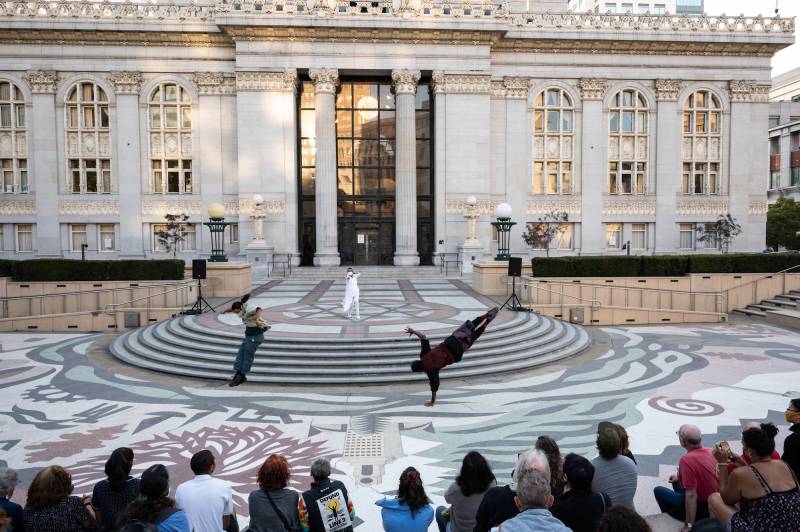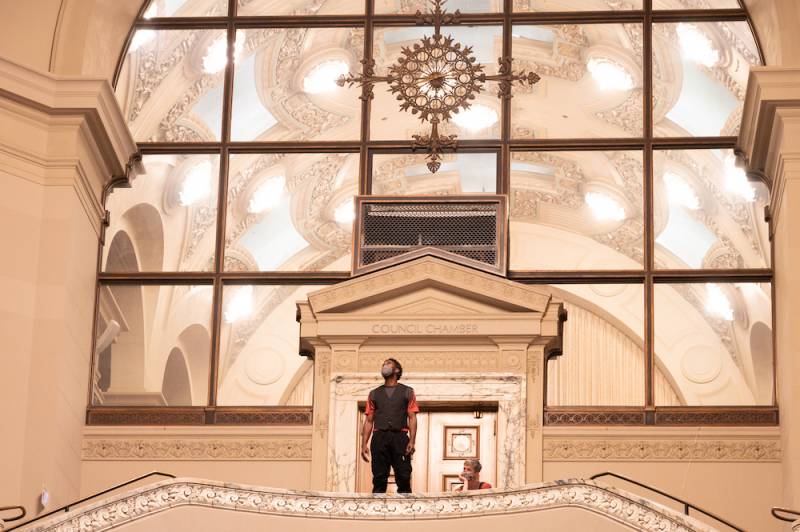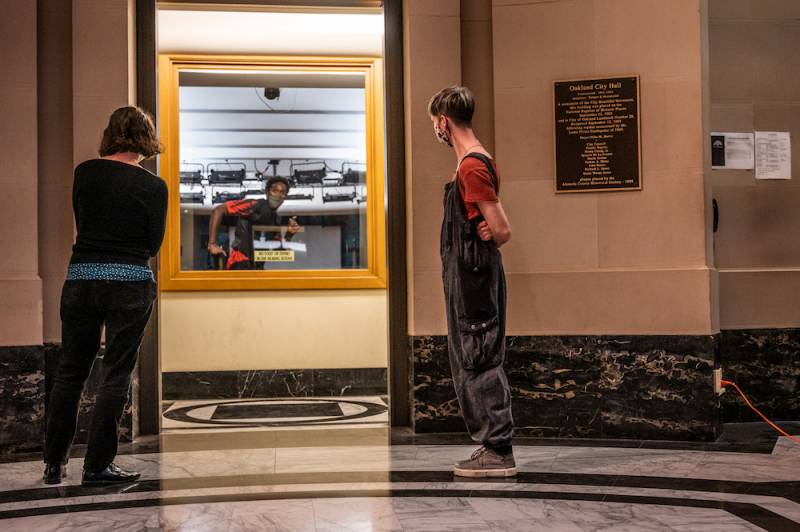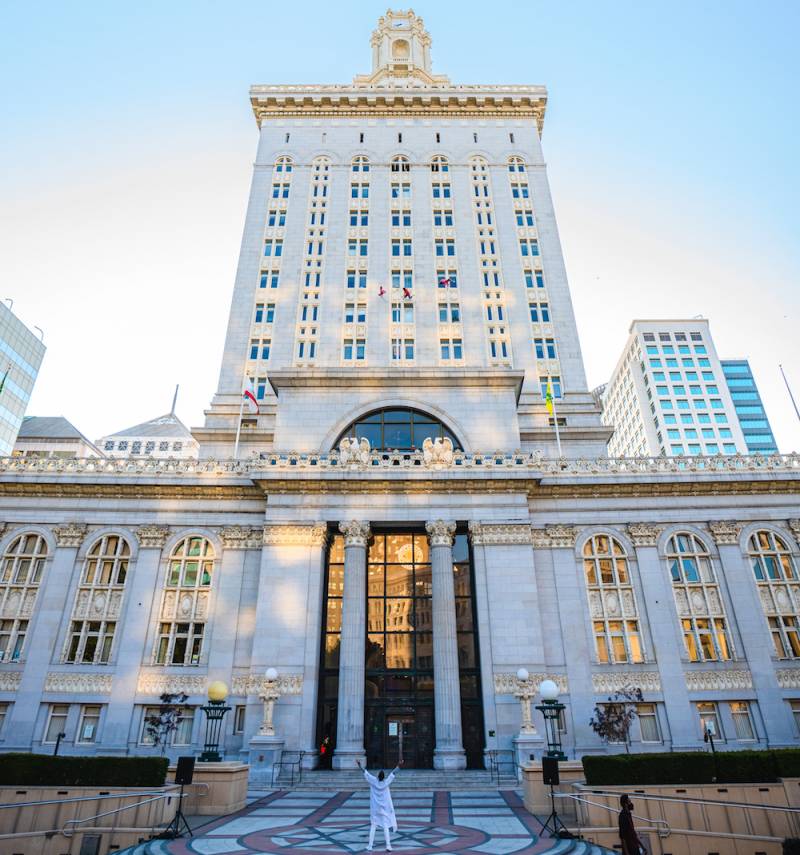What makes a city? Is it the space it inhabits, or the people who inhabit its space? Is it the architecture and infrastructure of today, or the histories of the past culminating in the now? When you encounter the stories of a city, whose voices get to be heard?
All these questions are in my mind while attending SPACES: Oakland on Saturday, July 10, in and outside of Oakland’s City Hall.
An imposing Beaux Arts granite “wedding cake” festooned with decorative details—bunches of figs and grapes, a pair of imposing eagles—City Hall becomes decidedly less impressive when I enter its scuffed side doors to see low ceilings, roped-off staircases, and dim corners. But the pre-show energy this weekend is crackling, expectant. This is the first indoors performance I’ve attended since March 2020, and it’s difficult to not feel a certain kind of way about it.
Almost immediately, the single line into the entrance becomes a loosely-determined quartet of groups, each assigned a different color and (eventually) a different guide. My group, with black yarn tied around our wrists, stands below the iridescent shimmer of textile artist Patricia Ravarra’s “Vermillion Bird” while we wait for the show to begin. Music by Oakland artists drifts in from another part of the building while we wait: snatches of Digital Underground and ’60s soul from resident DJ Dion Decibels. Finally we’re whisked up to the third floor and seated along the top of the grand staircase. The green group sits across from us, with red and white down below. The music suddenly ceases, the silence jarring. And then the drumbeats begin.
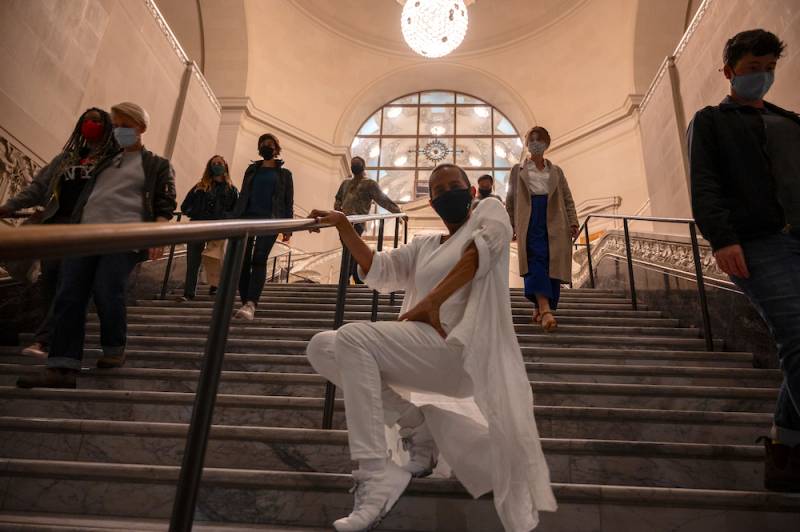
Because there are four different seating arrangements, I can’t say for sure what occurs in view of each. But from my vantage point the first dancer I see is Sarah Crowell, floating in from the south elevator like a fog-edged cloud, dressed in flowing whites and soft grey. Moving with purpose behind the green group and down the grand staircase to inhabit its center, her arms are raised as if in prayer or in welcome, while her clothing blends in with the marble of the stairs and her movements match each thoughtful drumbeat with precision and élan. As she dances down towards the audience seated on the main level, another dancer—Macio Payomo, dressed in green—begins to ascend, leaping up the stairs exuberantly to take Crowell’s place in the center. In all, four dancers join the ritual, and before they split off into four directions to be our guides, they meet in the middle of the staircase and dance reflections of each other’s joy as the percussion and vocals—provided by Christelle Durandy and Mena Ramos—swell into every corner of the space.
